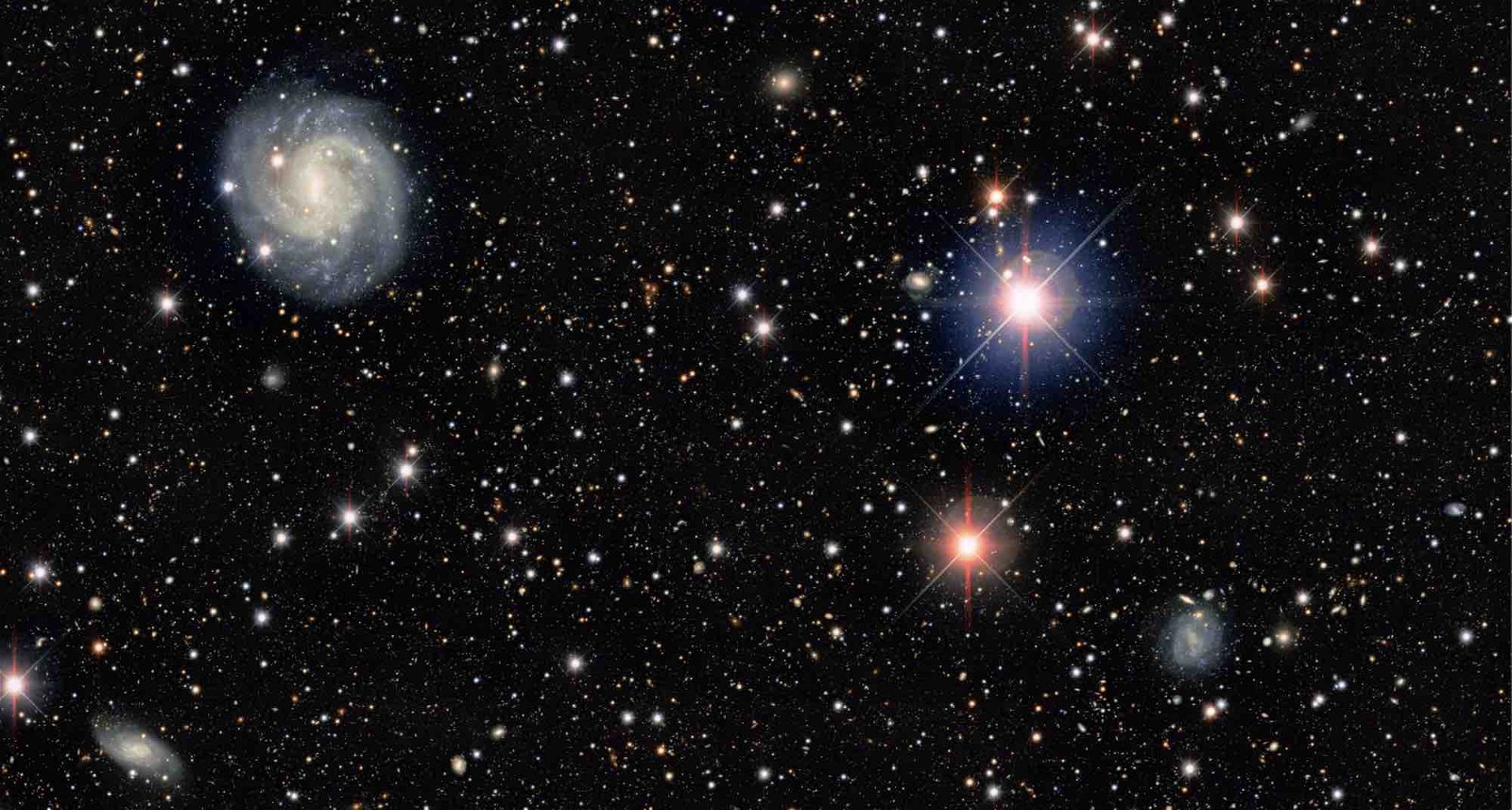Astrophysicists continue to wrestle with questions about the evolution of the universe. Measurements often don’t align as expected, and telescopes reveal bright objects that seemingly shouldn’t exist.
Now, physicists are proposing that dark energy could be the missing factor to explain this perplexing behavior, according to findings detailed in a newly published study.
Dark energy is a theoretical form of energy believed to drive the universe’s accelerated expansion. Acting as a form of negative pressure, it opposes gravity, causing the universe to continually expand. Scientists estimate that dark energy makes up over two-thirds to nearly three-quarters of the total energy and matter in the universe. Stanford University physicist Michael S. Turner first introduced the term in 1998.
Dark Energy at the Dawn of Time
Dark energy may have triggered the discrepancies that scientists observe when measuring the universe. One such mystery is known as the “Hubble tension,” where measurements of the universe’s expansion rate differ depending on the method used. Now, a team of MIT physicists theorizes that an early burst of dark energy could account for these inconsistencies. Additionally, early observations show far more galaxies in the universe than expected. The team’s models suggest that this early burst of dark energy might also resolve this issue.
“You have these two looming, open-ended puzzles,” says study co-author Rohan Naidu, a postdoc at MIT’s Kavli Institute for Astrophysics and Space Research. “We find that, in fact, early dark energy is a very elegant and sparse solution to two of the most pressing problems in cosmology.”
James Webb and the Origins of the Universe
Last year, the James Webb Space Telescope (JWST) made a key observation that is central to the team’s research. JWST can see farther than any previous telescope, not just in terms of distance, but also back in time. It captures light that has traveled for millions of years from the farthest reaches of the universe. Based on existing models of galaxy formation, scientists didn’t expect to observe much at such vast distances. However, JWST has detected light from 500 million years ago, showing galaxies as large as the Milky Way. How could this be?
“The bright galaxies that JWST saw would be like seeing a cluster of lights around big cities, whereas theory predicts something more like the light around rural areas, such as Yellowstone National Park,” says lead author and Kavli Institute postdoc Xuejian (Jacob) Shen. “And we don’t expect that clustering of light so early on.” While many physicists have revisited existing models, this team modeled the effects of an early infusion of dark energy.
Modeling the Early Dark Universe
The team’s models focus on the structure of the early universe, with particular attention to dark matter halos. These halos are regions of space with enhanced gravity, which attracts matter and leads to galaxy formation.
“We believe that dark matter halos are the invisible skeleton of the universe,” Shen explains. “Dark matter structures form first, and then galaxies form within them. So, we expect the number of bright galaxies to be proportional to the number of large dark matter halos.”
Resolving the Hubble Tension
Using the six standard cosmological parameters from the simple ΛCDM model of the universe, the team examined the Hubble constant and developed their Early Dark Energy (EDE) model. They theorized that determining the correct amount of dark energy could resolve the Hubble tension. If these parameters matched the observations from JWST, it would suggest that dark energy played a crucial role in the early universe.
“What we show is that the skeletal structure of the early universe was altered in subtle ways, increasing the amplitude of fluctuations. This led to the formation of larger dark matter halos and brighter galaxies earlier than our more traditional models predicted,” Naidu explains. “It suggests that the early universe was more abundant and clustered.”
“We demonstrated the potential of early dark energy as a unified solution to two of cosmology’s major challenges. If further JWST observations confirm these findings, this could provide evidence for the existence of early dark energy,” concludes study co-author Mark Vogelsberger. “In the future, we plan to incorporate this into large-scale cosmological simulations to refine our predictions further.”
The paper, “Early Galaxies and Early Dark Energy: A Unified Solution to the Hubble Tension and Puzzles of Massive Bright Galaxies Revealed by JWST,” was published in the Monthly Notices of the Royal Astronomical Society on September 13, 2024.
Ryan Whalen covers science and technology for The Debrief. He holds a BA in History and a Master of Library and Information Science with a certificate in Data Science. He can be contacted at ryan@thedebrief.org.

